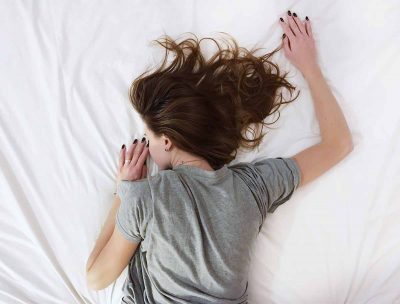 If you’re reading this, there’s a good chance you’re not getting enough sleep. You could probably use a nap, and you’re not alone.
If you’re reading this, there’s a good chance you’re not getting enough sleep. You could probably use a nap, and you’re not alone.
Data from the Centers for Disease Control and Prevention (CDC) shows that about 70 million U.S. adults report sleeping six hours or less on average. This is well below the seven or more hours of nightly sleep that the American Academy of Sleep Medicine (AASM) recommends for optimal health.
It’s important for you to get the sleep you need. No matter the age, children and adults report improved alertness, energy, mood and well-being when enjoying healthy, consistent sleep.
However, with different sleep needs for each family member, making sure that everyone gets the sleep they need can be a real challenge. Therefore, families should make it a priority to adopt routines that fit each individual’s unique lifestyle and sleep needs.
Whatever your situation, these four tips can help you and your family get on a consistent sleep schedule, sleep better, and in the process, lead healthier lives.
1. Use a bedtime calculator. The National Healthy Sleep Awareness Project has developed a bedtime calculator that can help you generate a customized sleep plan. Simply visit www.projecthealthysleep.org and enter your age and wake-up time. The calculator will tell you what time you need to go to bed to get an adequate amount of sleep. This personalized calculation can help you and your loved ones keep a schedule that allows everyone to get the sleep they need.
The AASM recommends that each age group get the following amount of sleep on a regular basis:
* Infants 4 to 12 months old: 12 to 16 hours (including naps)
* Children 1 to 2 years old: 11 to 14 hours (including naps)
* Children 3 to 5 years old: 10 to 13 hours (including naps)
* Children 6 to 12 years old: Nine to 12 hours
* Teens 13 to 18 years old: Eight to 10 hours
* Adults: Seven hours or more
2. Limit your screen activity. It may be tempting to watch television and scroll through apps until you fall asleep, but this is one of the worst bedtime habits. The blue light emitted from phones, tablets and laptops resets your circadian clock and “tricks” your brain into thinking it’s time to be awake. Late-night screen time is one of the most common sleep hygiene violations, and a new study links binge-watching in young adults with poorer sleep quality, more fatigue and increased insomnia. To promote responsible screen time, the American Academy of Sleep Medicine recommends setting an episode or time limit each night, using one of the apps for your computer, tablet and smartphone that filters out blue light, avoiding use of mobile devices while in bed; and turning off all screens at least a half-hour before your bedtime.
3. Implement a relaxing routine before bed. Studies have shown that children sleep better when they have a bedtime routine. Parents should develop a consistent, nightly routine that includes relaxing, calming activities, like reading a story before bed. Whatever your age, it’s important to turn off your computer or television at least 30 minutes before going to bed. Prepare to go to sleep by doing something relaxing, whether it’s reading, writing in a journal or taking a warm bath.
4. Add daily exercise to the routine. Many people lead busy lives that are mentally tiring but consist of little to no physical activity. This can be a recipe for a poor night’s sleep. Contrary to what you may believe, you don’t have to do an exhausting workout to sleep better. Even small amounts of routine physical activity may improve your sleep and overall well-being.
Getting enough sleep isn’t just a matter of feeling well rested and alert; it’s a necessary component of good health. Sleeping six hours or less per night increases the risk of a stroke, coronary heart disease, diabetes and obesity. Insufficient sleep is such a widespread problem that the CDC has named insufficient sleep a public health problem.
Therefore, it’s important to remember that healthy sleep is not a luxury, it’s a necessity. If you’re having trouble sleeping, help is available at more than 2,500 sleep disorders centers that are accredited by the American Academy of Sleep Medicine. For more information, visit www.aasmnet.org.
Photo by Vladislav Muslakov on Unsplash

